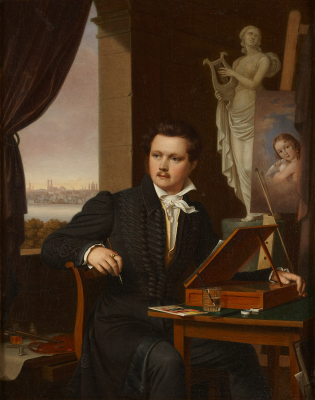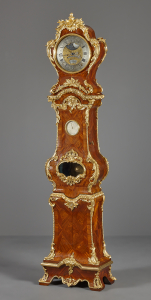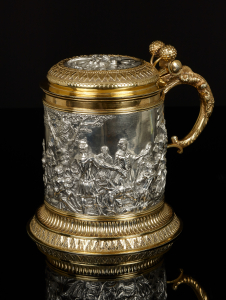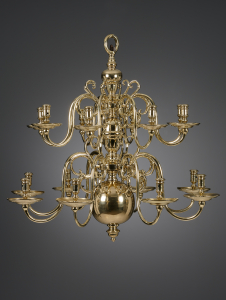Bernhard Peter von Rausch (1793-1865), self-portrait
Bernhard Peter von Rausch (1793-1865), self-portrait
In this painting, we see an artist at work in his workshop. Upon an easel beside him stands an incomplete painting of a young woman with grapes in her hands, and behind that is a statue of Erato, one of the nine muses. Erato is the muse of hymns, songs, lyric poetry and love poems. The artist, whose gaze is directed off to the viewer’s side, is surrounded by attributes related to the painter’s art, while he himself is working at his desk with the help of a box easel. Through the window to his left, we see a vista of the city of Munich, clearly recognisable by the twin towers of the Frauenkirche cathedral and the silhouette of St Luke’s Church.
The painting is signed beneath the window, behind the artist’s elbow: B. Rausch ipse fecit 1834. It is a self-portrait by Bernhard Peter von Rausch (1793-1865); “ipse fecit” indicates that it is a painting by his own hand.
Von Rausch was born in Oettingen as the fourth of seven children, and registered with the Munich art academy as an apprentice history painter. He also trained as a lithographer. This gave him the skills needed to create copies in stone of the portraits he was commissioned to paint during these years in Munich, so that he could reproduce them. Although he first travelled to Frankfurt am Main in 1825, where he was overwhelmed with portrait commissions, he did not permanently settle in the city until 1840, after his visit to Italy.
This painting comes to us from the descendants of the poet Josephine Holzmärker Gerbode, who – so it is believed – once received it as a gift. Considering the references to love and the art of poetry visible in the painting – the muse Erato and the image of the young woman with grapes on the easel – it is not inconceivable that Josephine received this painting from the artist himself, and that it was meant as a personal gift to her. However, if any connection did indeed exist between these two contemporaries, no evidence of it has survived to this day.
The painting remains in its original gilt wooden frame, with a distinctive decoration consisting of alternating palmette leaf bundles and acanthus leaves. The frame’s design can be attributed to Leo von Klenze (1784-1864), the court architect of Ludwig I of Bavaria and one of the most prominent architects of the Neoclassicist movement. From 1830 to 1836, Von Klenze modernised and standardised the painting frames of the Alte Pinakothek in Munich.
- Provenance
- Descendants of the poet Josephine Holzmärker Gerbode from Worbis
- Period
- 1834
- Material
- oil on canvas
- Signature
- B. Rausch ipse fecit 1834
- Dimensions
- 38 x 29.7 cm
Global shipping available









